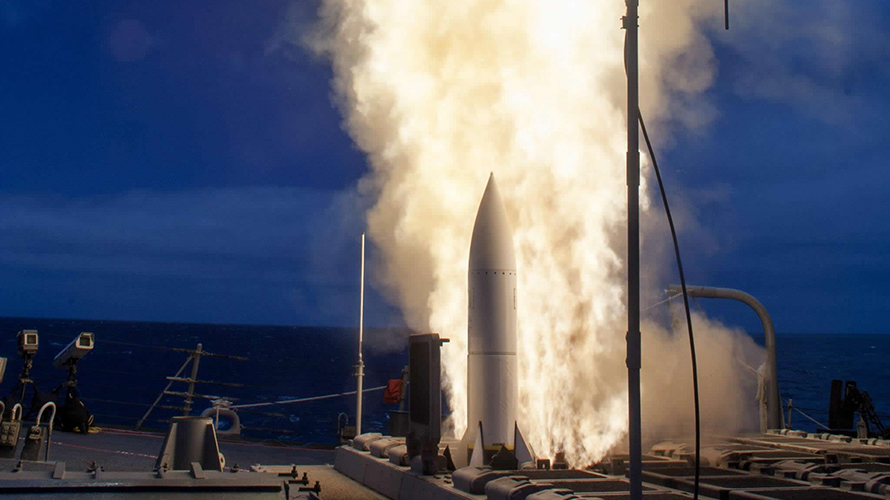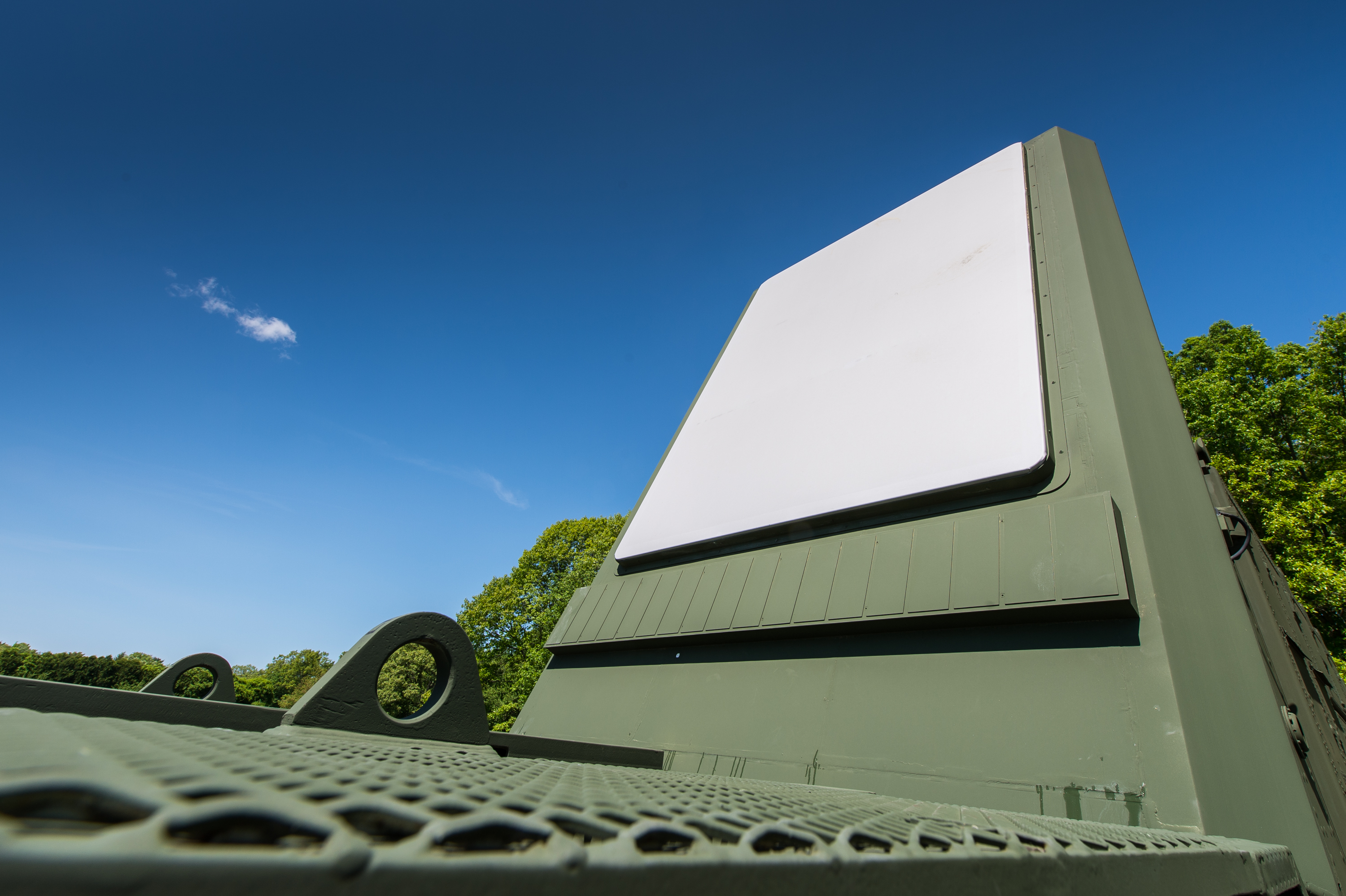By RAYTHEON
 In the face of expanding global threats to U.S. national security from North Korea and elsewhere, layered missile defense has become more important than ever. This vital capability requires that numerous cutting-edge technologies function together seamlessly to protect against catastrophe. And with the entire U.S. mainland in range of a potential intercontinental ballistic missile, there is precious little room for error.
In the face of expanding global threats to U.S. national security from North Korea and elsewhere, layered missile defense has become more important than ever. This vital capability requires that numerous cutting-edge technologies function together seamlessly to protect against catastrophe. And with the entire U.S. mainland in range of a potential intercontinental ballistic missile, there is precious little room for error.
The Department of Defense has a multi-pronged approach to this complex problem. Administered by the Missile Defense Agency, each layer of missile defense has unique capabilities and specific objectives designed for each type of threat, and these must be integrated to protect the homeland, partner nations, foreign military bases, and forward-deployed U.S. and allied forces.
Layered missile defense entails both offensive and defensive capabilities that include short-range systems, such as the Phalanx Close-In Weapons System (CIWS), as well as longer-range defenses, like the Terminal High Altitude Area Defense (THAAD). Only by continuously refining multiple systems to work in unison can the DoD simultaneously protect against cruise missiles, long-range ballistic weapons, and the growing threat of hypersonic missiles.
We discussed some of the latest developments in national missile defense with Dr. Mitch Stevison, vice president of Raytheon’s Air and Missile Defense Systems. One key tool is Raytheon’s Standard Missile-3 (SM-3), part of the Aegis Ballistic Missile Defense System designed for short- to intermediate-range ballistic missiles. Dr. Stevison noted that the SM-3 “is currently both sea- and land-based … the only ballistic missile defense intercept with multi-domain capability.” Crucially, it’s also been proven effective time and time again, with “more than 30 successful space intercepts to date.”
Another important missile is the Standard Missile-6 (SM-6), used by the U.S. Navy for long-range fleet defense. It offers versatility for multiple missions, able to successfully engage both ballistic and cruise missiles, in addition to having anti-ship capability. As Dr. Stevison explains, the SM-6 provides “the ability to engage threats over the horizon by leveraging sensors that can be elevated and forward-based.” When faced with anti-ship cruise missiles, he says: “Why shoot the arrows, when you can take out the archer?”
The SM-3 has also been a focal point of cooperation and collaboration with U.S. allies to provide regional missile defense. The SM-3 Block IB and Block IIA variants are operational at a land-based Aegis Ashore site in Romania, with another facility currently being constructed in Poland, effectively protecting all of Europe from ballistic missiles.
In addition to helping protect allies, testing missile defense systems with partner nations helps ensure functionality and interoperability between systems. In September, Japan’s Maritime Self-Defense Force successfully completed its first intercept test of the SM Block IB, “demonstrating the missile’s ability to seamlessly mesh with Japan’s maritime systems,” according to Dr. Stevison. Moreover, Raytheon is collaborating with Japanese industry partners to develop the next-generation SM-3 Block IIA, which will be produced and used by both Japan and the U.S. Other recent examples of U.S. joint testing include the 2016 Pacific Dragon exercises with Japan and South Korea, as well as 2017’s Formidable Shield, a live-fire integrated air and missile defense exercise in conjunction with multiple NATO nations, including France, Germany, Italy, Spain, the Netherlands, the United Kingdom, and Canada.
 Another crucial avenue to improve national missile defense is by leveraging existing technology that has already been proven effective by foreign partners. Dr. Stevison hails Israel’s Iron Dome as “the world’s most used missile defense system,” which has “intercepted more than 1,700 targets to date, with more than a 90 percent success rate.” Raytheon is also offering production of SkyHunter, a U.S. version of Iron Dome. Considering that Congress has already invested more than $1 billion in the development of Iron Dome, Dr. Stevison points out: “It makes sense for the U.S. to reap some of that benefit through a much-needed capability.”
Another crucial avenue to improve national missile defense is by leveraging existing technology that has already been proven effective by foreign partners. Dr. Stevison hails Israel’s Iron Dome as “the world’s most used missile defense system,” which has “intercepted more than 1,700 targets to date, with more than a 90 percent success rate.” Raytheon is also offering production of SkyHunter, a U.S. version of Iron Dome. Considering that Congress has already invested more than $1 billion in the development of Iron Dome, Dr. Stevison points out: “It makes sense for the U.S. to reap some of that benefit through a much-needed capability.”
And Iron Dome is hardly the only crossover program in the works. Earlier this year, Poland reached a procurement agreement with the U.S. for Raytheon’s Patriot Integrated Air and Missile Defense System. One aspect of this is the SkyCeptor interceptor, a variant of the Stunner interceptor missile used for Iron Dome. As Dr. Stevison explains the advantage of this variant: “SkyCeptor costs a fraction of other hit-to-kill interceptors and could be an ideal land-based missile defense solution for other nations besides Poland, including the United States.” Essentially, this procurement would provide real-world testing of a cost-effective hit-to-kill missile while also bolstering the defenses of an important strategic partner.
Overall, ensuring effective missile defense at home and abroad requires sustained partnerships, continued technological development, and thorough testing. Strong national security for the U.S. and allies demands continued intergovernmental cooperation, as well as close collaboration with industry to drive efficient, cutting-edge production that can keep pace with ever-evolving global threats. In this endeavor, failure is not an option.
No comments:
Post a Comment